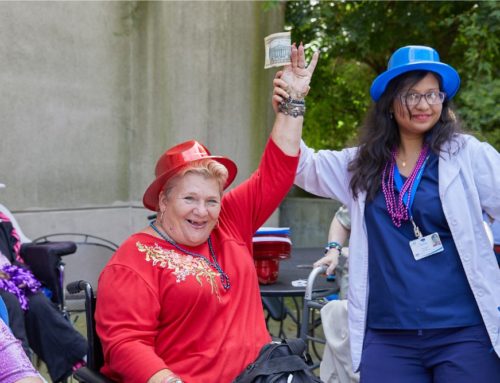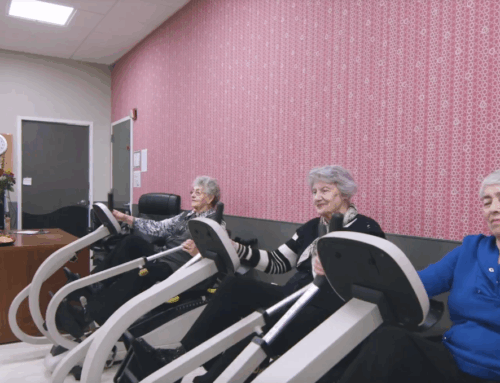Shoulder Arthritis: Exercises and Modifications
Shoulder arthritis affects those of all ages but mostly impacts those aged 55 and older. Pain is the most common symptom and is usually dull at first and worsens over time. Several risk factors cause such increased discomfort, including overuse during sports or labor activities. Of course, not using your shoulder also speeds up the progression as the area weakens, making movement more difficult.
To slow the progression, a few options are available, regardless of the stage you’re in. Exercise and physical therapy improve strength and flexibility to reduce your limitations. However, not all exercises are suitable for everyone with arthritis, including for those with shoulder arthritis. Your physical therapist will guide you on which ones are suitable for and which ones you should avoid doing.
Rehab or lifestyle changes may also be required, depending on your current state and any underlying conditions affecting the disease.

What is Shoulder Arthritis?
According to the American Academy of Orthopaedic Surgeons, there are several types of shoulder arthritis. These occur when the cartilage between the bones breaks down or results from an injury. As an autoimmune disease, rheumatoid arthritis causes the immune system to attack healthy tissue.
Regardless of the cause, the symptoms are often the same. Inflammation is the first sign, causing varying degrees of pain in the shoulder and neck. You may also notice stiffness and reduced range of motion when lifting your arm. Depending on the type of shoulder arthritis, you may also hear grinding, snapping, or clicking when moving the joint.
Exercises
Studies show that the best way to combat arthritis symptoms is through a well-balanced exercise program. Such activity reduces weakness while improving quality of life.
In an article by Teresa Dumain, Dr Nancy Yen Shipley states that staying still increases stiffness. It also reduces range of motion, limiting movement and increasing discomfort. She recommends two particular types of exercise to improve your condition.
As not all exercises are suitable for everyone with arthritis, including for those with shoulder arthritis, considering physical therapy is crucial to find out more about those you should avoid doing.
Stretching exercises are helpful for maintaining your range of motion, though it’s best to stick with gentle movements. Forcing your shoulder too far or pushing your limits increases pain and risks of further joint damage.
Strengthening exercises are also a crucial part of your routine. These keep the muscles in the arms and back strong and improve joint stability. Again, take things slow, doing a little every day to avoid arthritis flare-ups in the shoulder.
Lifestyle changes
Lifestyle changes are another necessity when trying to manage the early symptoms of arthritis, including altering your diet. Unhealthy meal and snack choices aggravate your condition and risk obesity, putting extra weight on your already delicate shoulder.
Several foods fight inflammation and reduce pain, according to Amy Paturel of the Arthritis Foundation. Those included in the Mediterranean diet are best, such as fish, nuts, seeds, fruits, vegetables, whole grains, and beans. These options are loaded with antioxidants and anti-inflammatories to combat early shoulder arthritis symptoms. They also contain plenty of fiber, healthy fats, and various vitamins and nutrients.
Your doctor may also recommend reducing stress and avoiding alcohol and cigarettes. Getting plenty of rest is also crucial to allow your shoulder to rest and recover.
Seek medical advice
When you notice the early symptoms of shoulder arthritis, it’s best to seek medical advice as soon as possible. Your doctor is an expert at treating the symptoms and slowing the progression. They can also recommend specialists, such as physical therapists, occupational therapists, or other rehab professionals, depending on your condition.
Fairview Rehab and Nursing Center in Queens, NY, offers outpatient and inpatient physical therapy for those with shoulder arthritis. Contact us or walk in to find out more about our rehabilitation therapies.
Shoulder issues can be very painful. Arthritis is a condition characterized by inflammation of the joints, and when it affects the shoulder, it can result in pain, stiffness, and reduced range of motion. There are different types of arthritis that can affect the shoulder. Learning more about your own condition can help to manage it.
It’s important to work closely with your doctor or physical therapist to develop a treatment plan that addresses your own individual needs and helps you manage your shoulder arthritis pain effectively. This can also help to slow down your arthritis, which is a progressing disease as well as prevent further complications.
Resources:
- American Academy of Orthopaedic Surgeons, Arthritis of the Shoulder https://orthoinfo.aaos.org/en/diseases–conditions/arthritis-of-the-shoulder
- National Library of Medicine, Aug 3, 2022, Are progressive shoulder exercises feasible in patients with glenohumeral osteoarthritis or rotator cuff tear arthropy. https://www.ncbi.nlm.nih.gov/pmc/articles/PMC9347133/
- Teresa Dumain, Feb 21, 2019, Shoulder Exercises to Ease Arthritis Pain: 6 Daily Exercises to Try https://creakyjoints.org/diet-exercise/exercises-arthritis-shoulder-pain/
- Amy Paturel, the Ultimate Arthritis Diet https://www.arthritis.org/health-wellness/healthy-living/nutrition/anti-inflammatory/the-ultimate-arthritis-diet
This article contains informational and educational materials and does not replace health or medical advice. For questions or concerns regarding your medical condition or health objectives, speak to a qualified physician or healthcare provider.






Leave A Comment